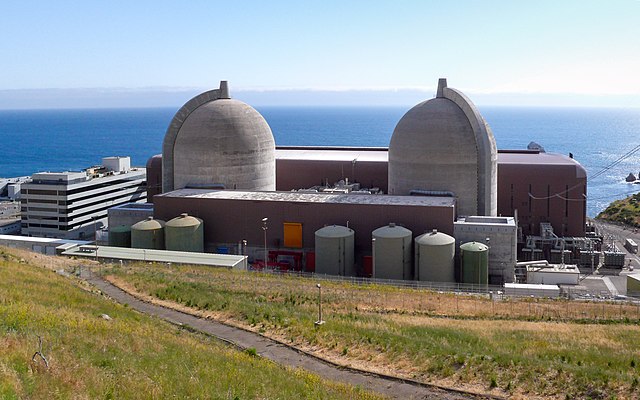California’s big challenge is not an environmental way of replacing its last nuclear power plant at Diablo Canyon destined for closure in 2024, but how to stop fueling the growth of poverty and homelessness. The bigger problem that will thrive in perpetuity, is the growing homelessness caused by continuously increasing the cost of electricity onto the less fortunate.
With California already having the highest cost of electricity and fuels in the country, the wealthy and middle class have more tolerance for expensive energy, but poverty kills and having legislatures pass legislation making energy more expensive on the less fortunate, resulting in a regressive expense onto the less fortunate which will worsen poverty.
California continues to take giant steps toward following Germany’s failed climate goals which should be a wake-up call for governments everywhere. Germany plans to shut down the remaining six nuclear power plants by the end of 2022 and to phase out coal-fired power generation by 2038. The huge electricity gap that arises in this way is to be filled with weather dependent electricity generation from solar and wind power. i.e., intermittent electricity at best. The impact of the high cost of electricity in Germany is such that almost five million Germans were unable to pay their electricity bills in 2019.
To complement ways to generate expensive intermittent electricty, American politicians are now pursuing the most expensive ways to generate electricity with offshore wind turbines on the East and West Coasts. This new movement defies the U.S Energy Information Administration (EIA) which has already documented that offshore wind continues to be one of the most expensive forms of electricity generation.
In addition to its high cost, offshore generation may not be in the best interest of ocean life as offshore wind turbine noise and vibration has clocked up a number of Cetacean fatalities, messing with whale’s sonar guidance and communication systems: Wind Turbine Noise Terrorising Whales
Shuttering California’s only zero-emission nuclear generating plant at Diablo Canyon in 2024 will be a catalyst to accelerating the growth of the homeless, as high electricity costs affects the cost of everything in our daily lives.
With just three years until the Diablo plant begins to power down, California has no plans to directly replace California’s largest power source, generating nearly 6 percent of the state’s electricity in 2019, all of it emission free.
Nationally, America has 93 nuclear reactors across 28 states. They generate one-fifth, a whopping 20 percent of the country’s electricity, emission free. California however has opted to shutter its last zero emission electrical generating plant despite a decision April 25, 2019 by the Public Utility Commission (PUC) of the State of California, overwhelmingly approved by the Legislature and signed by Brown, ordering regulators to “avoid any increase in emissions of greenhouse gases” as a result of Diablo’s closure.
Worldwide, as a result of safety and their ability to provide continuous uninterruptable zero emission electricity, today there are about 440 nuclear reactors operating in 32 countries around the world with 50 more new ones under construction. Significant further capacity is being created by plant upgrading of existing reactors.
Additionally, there are 160 nuclear powered ships that have accumulated 12,000 reactor years of “safe” marine operation.
California has achieved the dubious record of having the least reliable electrical power system in the nation. Between 2008 and 2017, California was the leading U.S. state for individual power outages with almost 4,297 blackouts in the ten-year period, more than 2.5 times as many as its closest rival, Texas. Power outages are now commonplace in California.
The State of California has been unable to generate enough in-state power and needs to import expensive power from neighboring states. The Governor is proud of California, through its dysfunctional energy policies, imports more electricity (32 percent) than any other state from the Northwest and Southwest as the state in unable to produce enough in-state electricity. How much more electricity is importable from adjoining states?
To date, renewables have proven to be a failure in replacing those reliable nuclear and natural gas generating plants that have been and are continually being shuttered.
Exorbitant energy costs are making California’s economic recovery from the pandemic even more challenging for the 18 million (45 percent of the 40 million Californians) that represent the Hispanic and African American populations of the state, and the more than two million undocumented immigrants.
Costs for electricity have been skyrocketing, inflicting more energy costs onto the less fortunate as an unwanted regressive expense. The median income for Latino households in 2016 was $56,200, $55,200 for African American households, and $96,400 for white households. According to several studies, as many as 40 percent of all Californians cannot regularly meet basic monthly expenses.
The report from the Energy Information Agency (EIA) shows that California’s electricity policies have contributed to household users paying 50 percent more, and industrial users paying more than 100 percent more than the national average for electricity. Only Hawaii has higher rates. What is being done to reverse the cost of electricity?
“Clean” electricity by 2035 faces two major hurdles: 1) the cost of trillions to turbocharge the clean energy economy so that it relies solely on “clean” electricity by 2035, and 2) resistance from NIMBY’s that are successfully halting those noisy and esthetically obnoxious wind farms from generating their intermittent electricity. How much land is required for intermittent electricity?
Governor Newsom continues to perpetuate the state’s dysfunctional energy polices and continues to do everything possible to further INCREASE the costs for electricity for its 40 million residents which does not bode well for the bottom half making less than $20 an hour.
As Governor Newsom faces a recall election, he continues to do absolutely nothing to REDUCE electricity costs for the state’s residents that can least afford more expensive energy. To heal the “wound” that is causing homelessness and poverty to be on the rise, Newsom needs to DECREASE the cost of electricity that will benefit society in perpetuity, not continually increase it.
